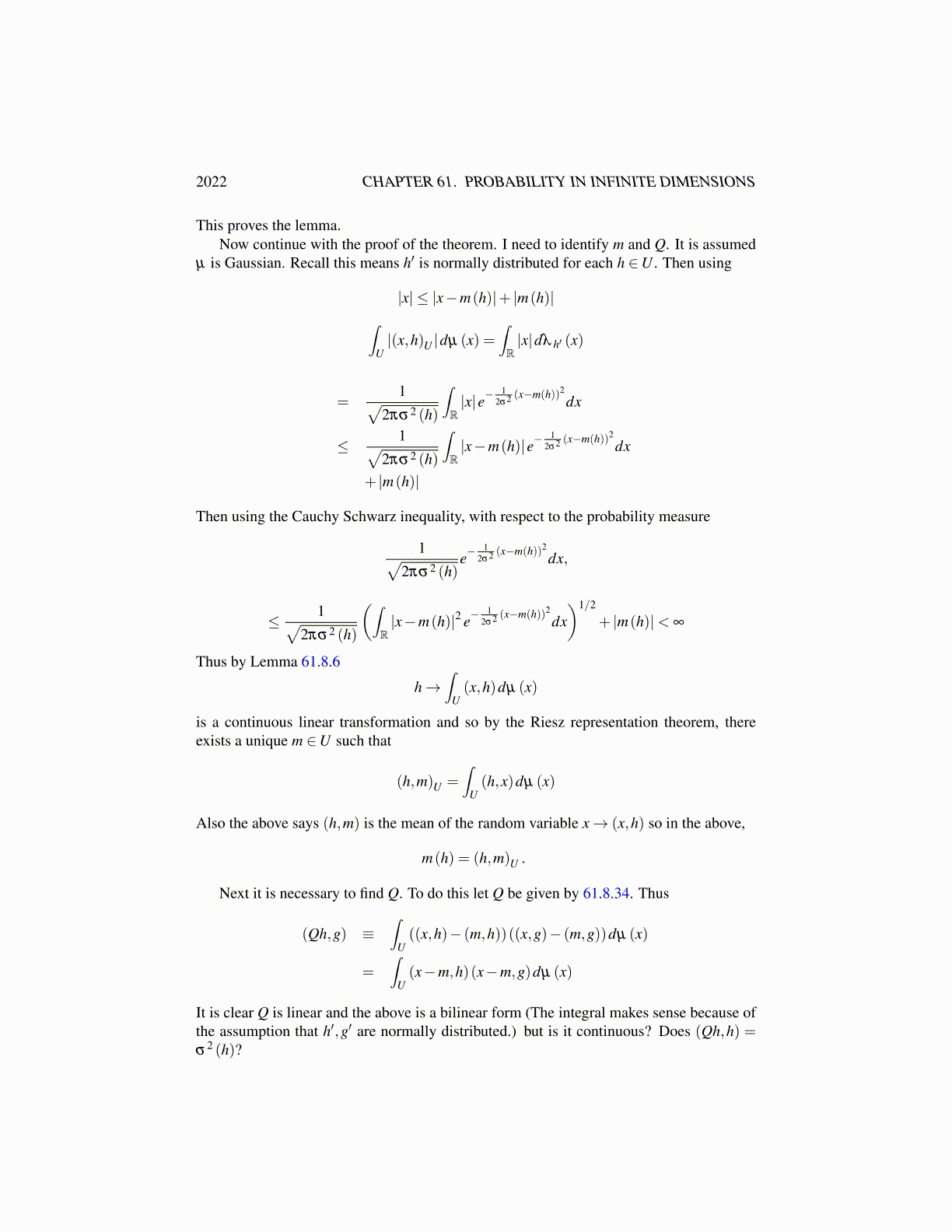
2022 CHAPTER 61. PROBABILITY IN INFINITE DIMENSIONS
One can tell whether µ is a Gaussian measure by looking at its characteristic func-tion. In fact you can show the following theorem. One part of this theorem is that if µ isGaussian, then m and σ2 have a certain form.
Theorem 61.8.5 A measure µ on B (U) is Gaussian if and only if there exists m ∈U andQ ∈L (U) such that Q is nonnegative symmetric with finite trace,
∑k(Qek,ek)< ∞
for a complete orthonormal basis for U, and
φ µ (u) = µ̂ (u) = ei(m,u)− 12 (Qu,u) (61.8.32)
In this case µ is called N (m,Q) where m is the mean and Q is called the covariance. Themeasure µ is uniquely determined by m and Q. Also for all h,g ∈U∫
(x,h)U dµ (x) = (m,h)U (61.8.33)∫((x,h)− (m,h))((x,g)− (m,g))dµ (x) = (Qh,g) (61.8.34)∫
||x−m||2U dµ (x) = trace(Q) . (61.8.35)
Proof: First of all suppose 61.8.32 holds. Why is µ Gaussian? Consider the randomvariable u′ defined by u′ (v)≡ (v,u) . Why is λ u′ a Gaussian measure on R? By the defini-tion in 61.8.31, ∫
Ueitu′(v)dµ (v) ≡
∫U
eit(v,u)dµ (v) =∫R
eixdλ u′ (x)
=∫
Uei(v,tu)dµ (v) = eit(m,u)− 1
2 t2(Qu,u)
and this is the characteristic equation for a random variable having mean (m,u) and vari-ance (Qu,u) . In case (Qu,u) = 0, you get eit(m,u) which is the characteristic function fora random variable having distribution δ (m,u). Thus if 61.8.32 holds, then u′ is normallydistributed as desired. Thus µ is Gaussian by definition.
The next task is to suppose µ is Gaussian and show the existence of m,Q which havethe desired properties. This involves the following lemma.
Lemma 61.8.6 Let U be a real separable Hilbert space and let µ be a probability measuredefined on B (U) . Suppose for some positive integer, k∫
U|(x,z)|k dµ (x)< ∞
for all z ∈U. Then the transformation,
(h1, · · · ,hk)→∫
U(h1,x) · · ·(hk,x)dµ (x) (61.8.36)
is a continuous k−linear form.